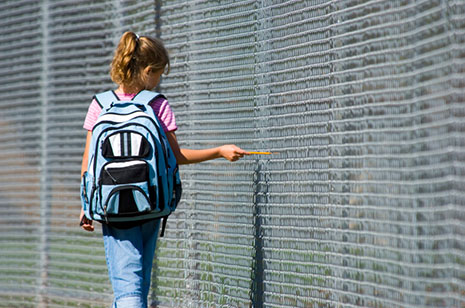WHEN Kevin Rudd announced the Education Tax Refund back in 2007 he held a laptop in his hand and proclaimed it to be the “toolbox of the 21st century.” It was one of the lasting images of the election campaign that brought Labor to power. The branding was simple and effective, and the policy above reproach: a Rudd government would reward working families who invest in education by providing them with a tax refund.
It also made for an irresistible political football, and this time around both Labor and Liberal were only too keen to play. Labor got in first, proposing to make school uniforms an eligible expense for the ETR. Attempting to stay true to the egalitarian image of the toolbox, Julia Gillard suggested that a school uniform “helps undercut the kind of unhealthy competition we can see at schools to have the latest, most expensive, fashionable gear.” She avoided the obvious point that only a school uniform complete with expensive blazer could cost anything like the ETR spending cap (set at $780 for primary and $1558 for secondary school children in the 2009–10 tax year). When Tony Abbott replied, he did away with the dog whistle and appealed directly to parents of private school students. His longer list of eligible expenses included not only uniforms but school fees as well, with spending caps of $1000 and $2000 for primary and secondary students respectively.
Because the ETR rewards families who spend more, these changes add to the benefit for families whose children attend a private school. Consider, for example, the purchase of a computer for a secondary school student at the start of the school year. Family A buys an expensive laptop worth $1500 and claims 50 per cent, or $750, back. Family B can only afford a $600 desktop and claims an ETR of $300. The gap between the two refunds: $450. The inequity could be reduced very simply by reimbursing 100 per cent of expenses up to $779 so that Family A would receive $779 and Family B $600, a difference of only $179.
The argument for reimbursing only 50 per cent of expenses is that it encourages families to spend more on education. But the incentive can only operate if the spending cap is set at a realistic level for all eligible families. Otherwise, the policy simply provides an incentive for the better-off to spend more, leaving the rest behind.
For most families, eligibility for the ETR is determined by entitlement to Family Tax Benefit Part A. FTB-A is paid to families on unemployment or parenting payments, but can also include, for example, a family with two children and an income of almost $112,000. This considerable difference in spending power means that Gillard and Abbott can use the ETR to lure middle-class votes while claiming to be looking after the real battlers. The proposal to include school uniforms and fees as eligible expenses must be seen for what it is: middle-class welfare.
It is interesting to compare the ETR to the Teen Dental Plan, another payment introduced by the Rudd government. Under normal circumstances, both are available to families entitled to FTB-A. Both target children in a particular age group. But the Teen Dental Plan has a specific, well-defined goal, whereas the ETR has the potential to be transformed into a payment without any clear purpose.
The Henry Tax Review discussed family payments at length. It put forward the guiding principle that family payments should address “the direct costs of children in low-income families” – something the Teen Dental Plan is clearly designed to do. Using this principle, it could be argued that the ETR should include school uniforms, provided the spending cap was reasonable. But no sensible argument can be made for extending the ETR to private school fees. And that an iPad could qualify as a direct cost of a child in a low-income family is troubling.
If Julia Gillard is to reconsider some of her election promises in the light of a “new political paradigm,” perhaps the scope of the Education Tax Refund could be added to the list. •




